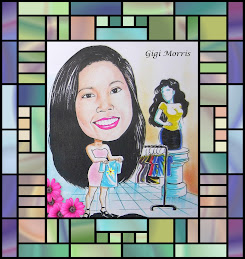Here’s the ASG’s invite to the contest:
“The American Sewing Guild's 2010 Creativity Contest is your invitation to a fabulous sewing journey. It begins with nine great patterns. Use just one pattern or mix them up to create a one-of-a-kind outfit. Adjust, adapt, embellish. Size them up or size them down. Sew for yourself or someone else.”
That’s exactly what I am looking for! A fashion challenge that will lead one to fashion and sewing journey! One of the many things I always emphasize to my students is this: As a fashion designer there are existing elements and details that you can adjust, adapt, alter or embellish as starting point to aid you in your design process. Or using an inspiration and skills acquired, create an entirely new detail. The bigger challenge that fashion designer have to face is how to effectively manipulate these elements of fashion design. One cannot throw in as many great details in a garment all at once. The principles of balance, emphasis, rhythm and proportion should be used as a guide in the process of “manipulating” the elements of design. The fabric, the trims, the details, the construction method, size specifications, etc. should all blend harmoniously to create that PERFECT FIT in apparel. The design process does not end when an illustration is finished; the sewing or construction phase must be completed. An effective fashion designer need not be the best patternmaker or best seamstress but these skills are important to have (and not just know) to effectively engineer your garment.
So back to the fashion challenge. The starting point: 9 Simplicity patterns.

Before I share my thought process on this, let’s read some comments in the American Sewing Guild Facebook fan page about the pattern selections.
“I was not excited about the ones they picked last year either, but when I saw the fashion show at the ASG conference I found it hard to pick out what pattern they were because they had revamped them all so much, except for the kimona one.”
“I teach youth sewing, and when I showed my kids the pattern for the youth group, (younger than 14)...they went...ewwwwww. Sorry, ASG, not your typical teen outfit here. I really wish the pattern companies would come up with some trendy patterns so our young ones can enjoy sewing!”
“The past few years at conference, I've seen some very exceptional and creative things from the younger sewers. I think these patterns have lots of potential. I've already shown them to my teen group and they have some great ideas!”
"I see lots of potential for "creative use of fabric".... the wheels are turning ...”
Now, my thought process… In real world, in the apparel industry, designers face some “limitations” in their design process. These are things we normally discuss and study in the class. The prêt-a-porter industry is more limiting than the couture and made-to-order industry. In couture, you have one or limited yet well-defined client to satisfy. In prêt-a-porter or RTW industry, your target market is not easy to define. There is a need for a lot of marketing analysis, marketing strategy and proper merchandising techniques to consider to accurately define your target market. So this fashion challenge is not a search for the next best American fashion designer. But for a fashion design student, this challenge represents situation in real world; you have some “limitations” to deal with and this is when you use your creativity to overcome them. This challenge is using the nine Simplicity pattern as starting point in the design process to come up with the best one of a kind outfit or wardrobes for you or someone else. Will you modify the given patterns to suit your specific design idea? Or do you stay true to the existing pattern and use exciting trims and attention-grabbing garment details to make an interesting outfit? Which will pay off? Which will cost you out of the competition?
In my future blogs, I will focus on the two Award Categories:
- Most effective use of Fabric/Trim.
- Most Interesting Wardrobe Concept.
To join this creativity contest, you need to be an ASG member. For more information, visit their website at http://www.asg.org/
So can you make it work? Will your ideas be in or out? Or will the judge say “I’m just not buying it?”
My dear, let the fashion challenge begins!






No comments:
Post a Comment